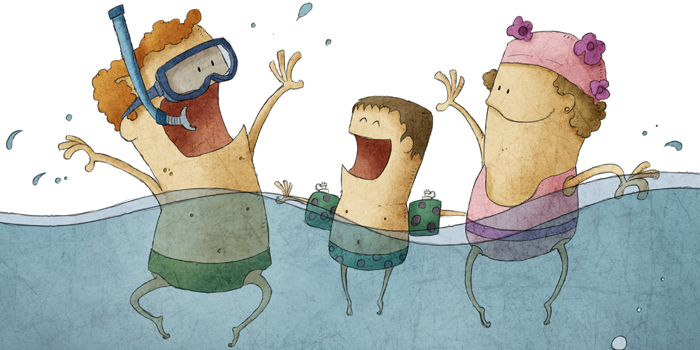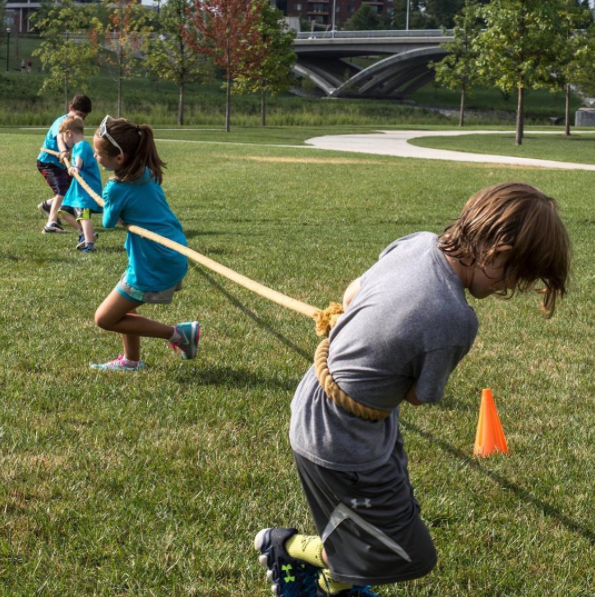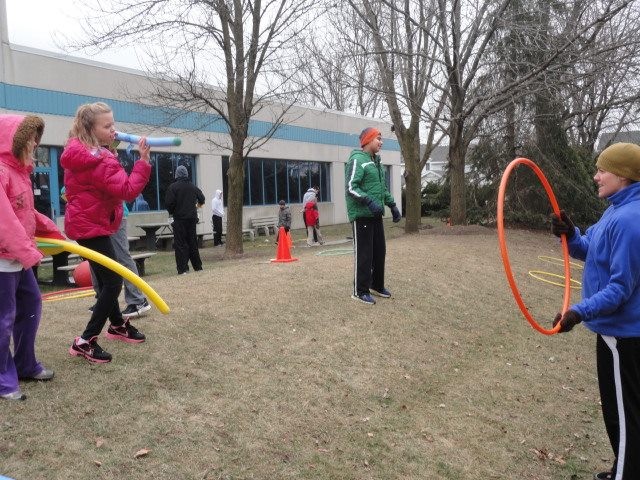
Originally published in December of 2016
Through witnessing a countless number of programs designed and implemented by individuals interested in creating positive change for children and young adults on the autism spectrum, I’ve seen remarkable advancements in social skills through an active, hands-on/experience-based approach.
This eight-article collection provides ideas to advance an inactive, socially craving child/young adult into a physically and socially strong individual through movement and strength. We begin at the gym and through progressive types of training travel off-site, shifting from one-to-one training to team training, to play dates with friends.
RECENT: A New Kid Under the Bar
In the previous six training types, social interaction and engagement have continually matured as the environmental climate of training has moved in new directions. More and more, our overall experience hinges on our ability to connect, first with one another, and then with those surrounding us. Everything leading up to this point has prepared us for this type of training — sharing a training experience at home with members of the family.
Home Training
Home training at this initial level involves the child performing one mastered gym exercise or activity/game at home. Prepared by the trainer, the homework assignment includes setup requirements, the exercise name, number of sets and reps, frequency per week, a tracking system, and designation with whom the homework is to be completed.
Finding a Match
Just as we sought out a trainer, training partner, and training partners in the previous training types, our approach for pairing the child with a family member remains the same. This can include the mother, father, grandmother, grandfather, brother, or sister. Heck, this could also expand outside of the immediate family and include the neighbor. What’s important here is that the pair will consistently meet, they’ll reach homework expectations, and they'll create new healthy habits outside of the gym without a trainer.
Social Integration
At this point in the progression, the child is well-versed with training in a group dynamic in a variety of environments. Now at home, this is a great opportunity to get the family involved by creating new healthy habits using indoor and outdoor space.
Create Healthy Habits
There’s likely a home schedule in place that the child follows on a daily basis. This may look like the following: wake up, get ready for school, attend school, come home, rest, do homework, eat dinner, free time, devices shutdown (games, computers, phones), prepare for sleep, and sleep. Although this looks like a pretty busy day, and it is, how many minutes were spent moving? I beg you to place a Fitbit on the child’s wrist and record how many steps were taken in the day. How many minutes did the child spend with a family member doing something constructive in collaboration?
Use home training as a powerful tool to get moving with purpose, while spending quality time with another. Watch how this new habit can spark positive change to family recreational activity and meal choices.
Sleeping Patterns and the Importance of Sleep
As training becomes a new habit at home and we fit this into our daily schedule, this can be a great way to amplify the importance of sleep and how sleep affects all of our activities. I've found that when parents are paying for training (Saturday at 10 AM), following a strict sleep pattern the night before becomes habitual. Home training extends this conversation and expectation. For example, if a home session takes place on Wednesday, the importance of our sleep schedule (like we prepare for a gym session) comes into play. Now, we can assume the child is getting two solid days of quality sleep.
The hope is that the association between sleep and performance in the gym transfers to sleep and all the things the child finds joy in (video games, friends, school, reading, playing guitar, building robots, painting, collecting rocks, you name it).
Strengthen Relationships
This is a great opportunity for the child to diversify what he or she is good at and pass it on to help whoever is observing and taking part in the home session. In this situation, the child naturally becomes an expert in this domain. This is partly due to the fact that homework in the early stages focuses on movements that the child has mastered in the gym. As an expert, the child can model exercise expectations and coach with correctives in confidence.
Consider how many relationships within the home the child takes ownership. Imagine how this hard-wired connection between two can lead to something voltaic.
Stress Management
Now is a good time to expand our stress management chest with more tools. What exactly is the trainer using in the gym to calm frustration, stress, and anxiety? How can her approach be recreated at home? A past client of mine loved to jump on the rebounder at the gym when she was stressed. Instead of using this burst of energy to be combative towards herself or myself, jumping on a rebounder for a few minutes realigned her energies. As the parents became aware of this remedy, they explored the idea of purchasing a trampoline for their yard. A success! Jumping on the trampoline became a new stress reliever at home that promoted cardiovascular health, strength, and experiencing the great outdoors. This led to her brothers and sisters joining her and having fun, which was otherwise a rare occurrence.
Other stress management alternatives for the home (indoors and outdoors) could include swinging, climbing, heavy resistance work, walking, sprinting, swimming, cycling, heavy bag work, and wheelbarrow rides.
Planning Behind the Schedule
Depending upon the needs of the child, this may be a daily or weekly task, sometimes only taking five minutes to complete (including setup, review of assignment, performance, and tracking). This could also substitute missed gym sessions due to a schedule conflict, weather, and vacation. This task is presented as homework by the trainer and demonstrated for at least one home member to witness. This is where a phone comes in handy and a video can record expectations, too. Keep in mind, in the early stages this task is nothing new. It is familiar and easily attainable. One of the most important aspects of this assignment is that you’re beginning the transfer process of awareness, practice time, formation of new habits, changing roles, taking responsibility, and stacking success. As home training evolves, it can transform into an entire training session instead of a mini assignment.
Schedule flow is similar to gym training. In the infancy period, establish a time and a starting place. Be sure to choose a time that shows no obvious conflict with the daily schedule and if there is, ensure there's enough flexibility in the schedule to get it in. For example, choose a daily event that is consistent and have home training precede or proceed. Consider where is a good place to exercise. This location should be free of hazard, have available equipment, and provide minimal interruption or distraction. Regardless if this session is five minutes or 30 minutes in length, these are a few expectations that home training should include: show up as if it were a session at the gym, dress appropriately, equipment is easily retrievable, and the schedule components are designated. Execute the exercise(s) as presented, record performance, celebrate success, and be done. It’s not a bad idea to have another activity lined up afterward that the child is anticipating (free time, a favorite snack, video games, etc.). Therefore, when necessary, using "first" and "then" statements carries some weight and reinforces that play requires work.
Once this habit is sustainable is when homework will focus on weaknesses and movements that need continual practice and reinforcement outside of the gym.
Schedule
Below are two schedules. The first schedule illustrates what a quick daily or weekly session would like when home training is still in the infancy stage. This is where we’re trying to formulate the habit and stack success. The second schedule illustrates what a typical home session looks like once working out at home becomes a habit and expands beyond five minutes. Work is presented in the second schedule (skills that are developing).
Five-Minute Schedule
Setup: Change clothes, place mat on floor in cleared space
Exercise: Hip Lifts with Dad
Sets/Reps: Two sets of 10 (hold each rep at the top for one second)
Rest: 60 seconds
Frequency: Tuesday and Thursday at 6 PM
Tracking: Mark off schedule once each session is completed
Notes
Prepared by the trainer, the homework assignment includes setup requirements, the exercise name, number of sets and reps, frequency per week, a tracking system, and designation with whom the homework is to be completed with. This is a quick five-minute session with one exercise (hip lifts) the child is confident when performing and has good form. The tracking system shows proof of completion and provides notes for the trainer. If necessary, use this system as a way to provide reinforcement and incentives for the child. For example, if the child completes the homework assignment and the trainer approves, the child earns a token and once five tokens are collected, the child earns lunch of his or her choice.
20-Minute Schedule
Warm-Up: Five minutes
- Walk Around the Block
- Hip Lifts: Two sets of eight (two-second squeeze)
Work: Five minutes
- Side Shuffle: Markers, without markers, slow, less slow
- Single Leg Raise: 10 feet for two rounds
Game: Six minutes
- Simon Says: Balance emphasis, two rounds, take turns being Simon
Cooldown: Two minutes
- Control Breathing
- Press Back into Floor
Track Calendar: Two minutes
- Proof of Completion
- Include Notes for Trainer
Notes
The warm-up gets us in the neighborhood and has us walk around the block. In this case, the child is well-versed in hip lifts — choose something that the child is competent in (doesn't require heavy coaching). Work is positioned as work because this is where a lot of effort is required. These are skills the child is not fluent in and requires heavy coaching. In this case, we're using markers for foot position reminders and adjusting tempo slightly. It's important with this exercise and the following balance exercise that we don't move past the frustration point. Again, this is just another opportunity to work on these skills outside of the gym. If it's a good day, run with it. If it's not a good day, shut it down. The game is a fun way to practice the skills exercised in WORK, includes movements the child excels at, and also includes other nonsensical movements. The overall point of the game is to have fun and conclude the session with something informal that mixes a variety of skill levels. Use the cooldown to calm down, focus on breathing, and return neutral. Track progress and note anything that needs more attention. These notes are valuable for the trainer and will help him with his coaching and future homework sessions. Use a similar incentive system in the example above if necessary.
Transition to Next Training Type (Play Date)
In the next training type, we move from Home Training to Play Dates. This type of engagement is exactly what the title suggests; it’s a play date! It’s a weekly or monthly commitment to have a play date with a friend combining movement, personal interest/choice, and fun.
Thanks for reading. Please use the comments section below to ask any questions. I’d love to help any way I can.
WHOLE SERIES











